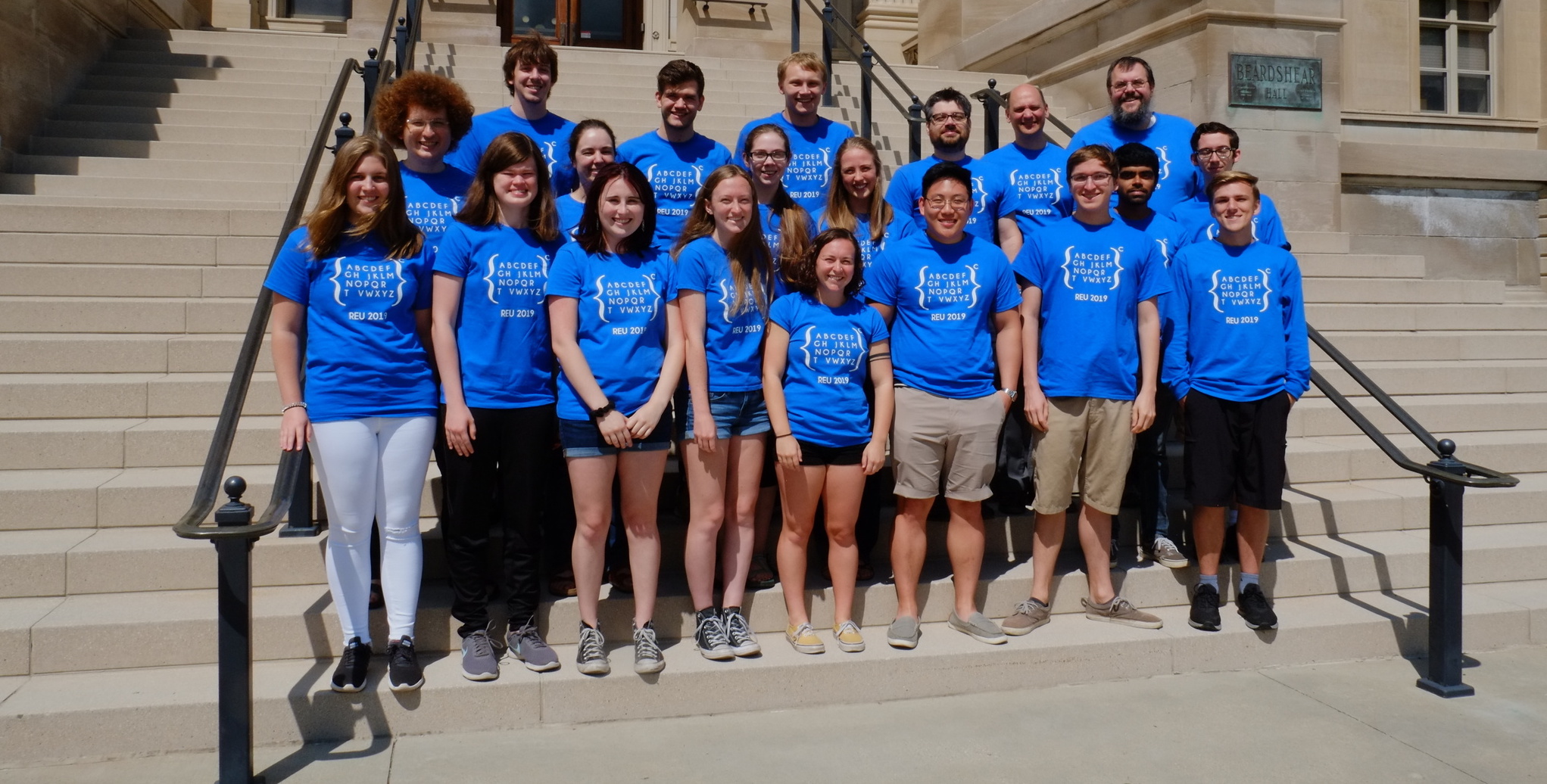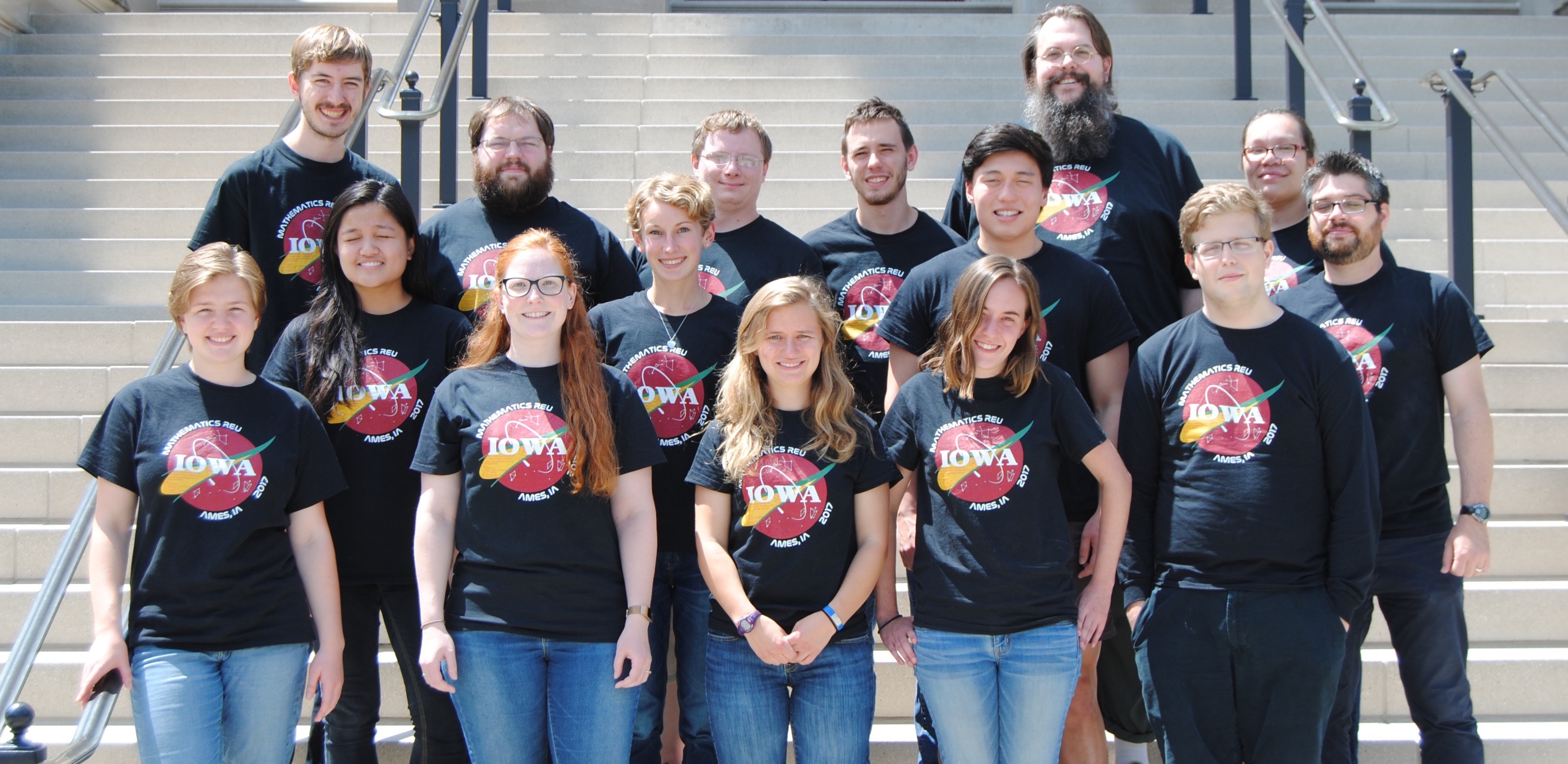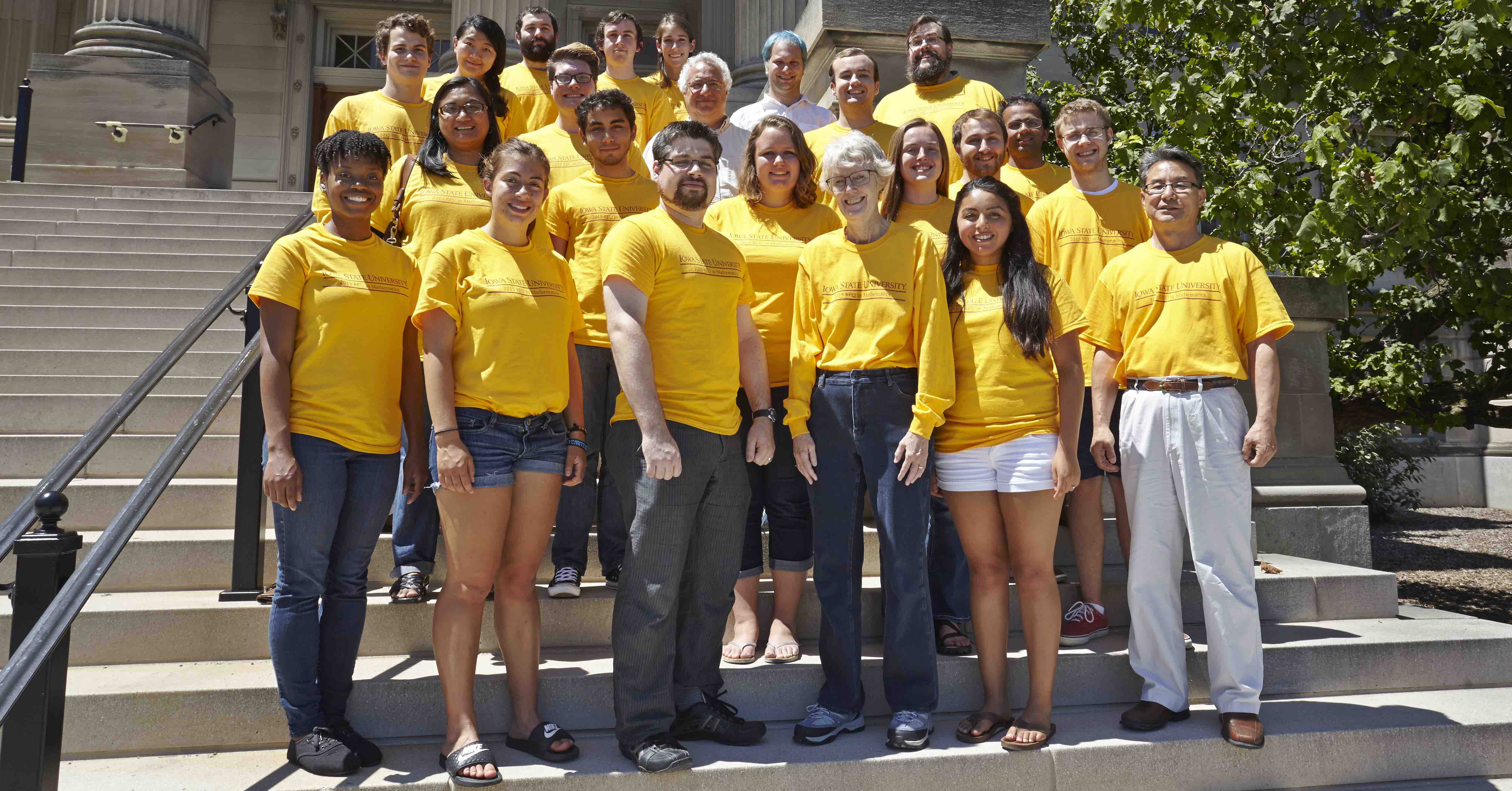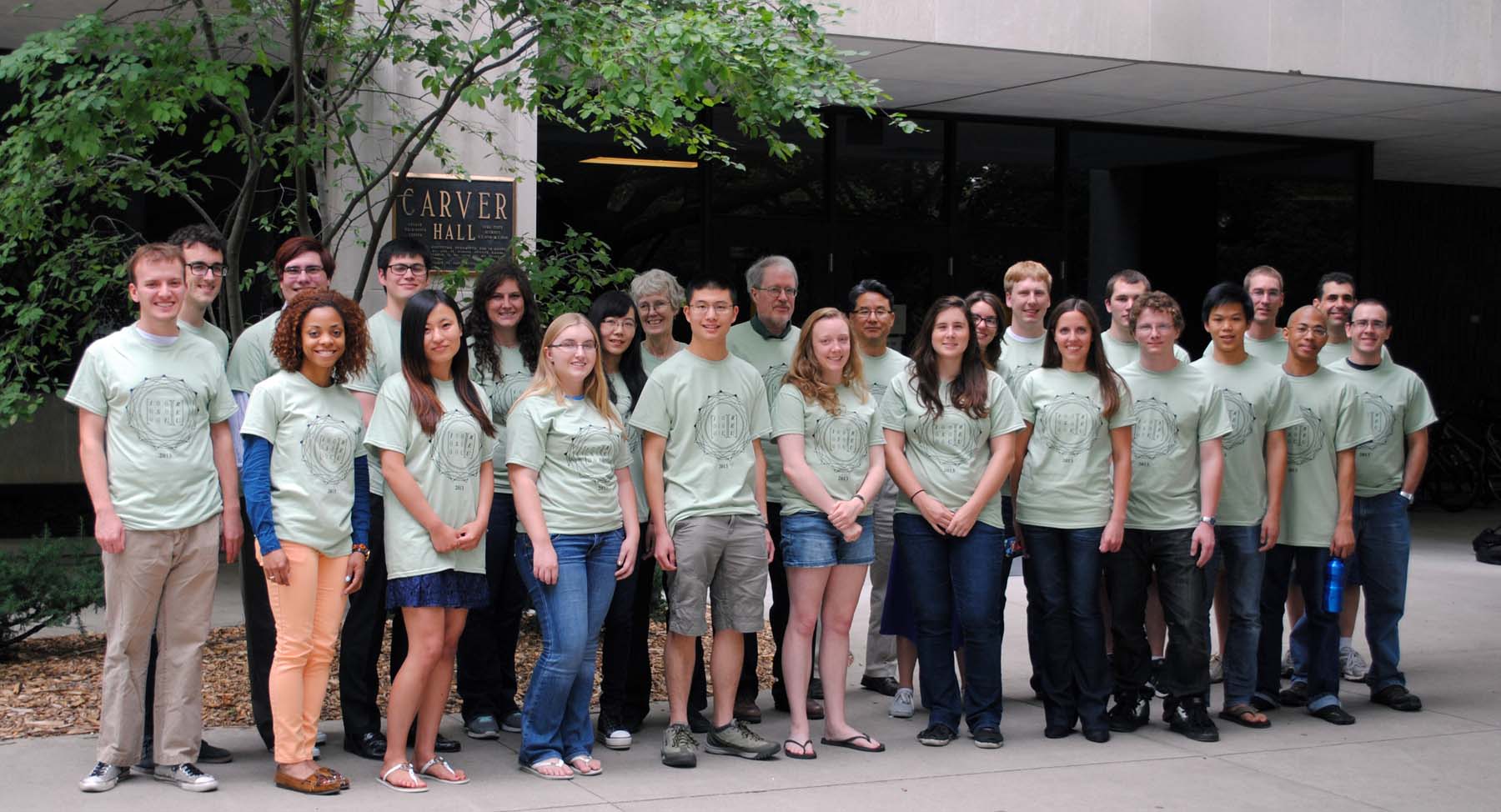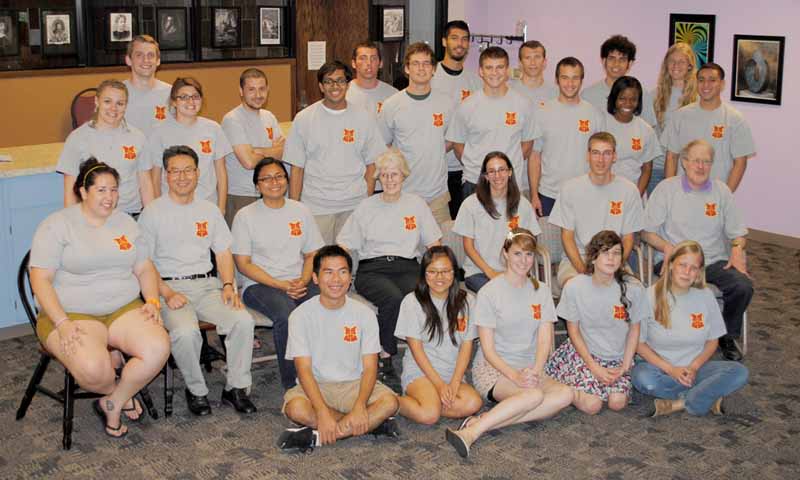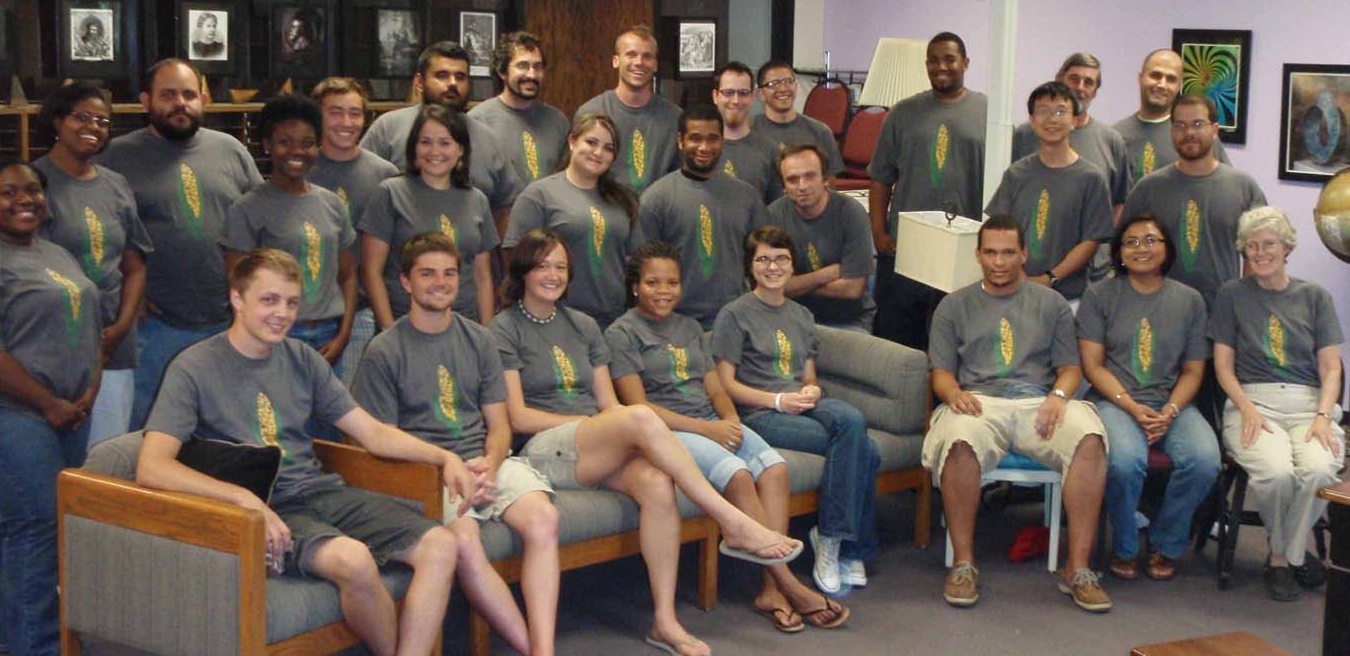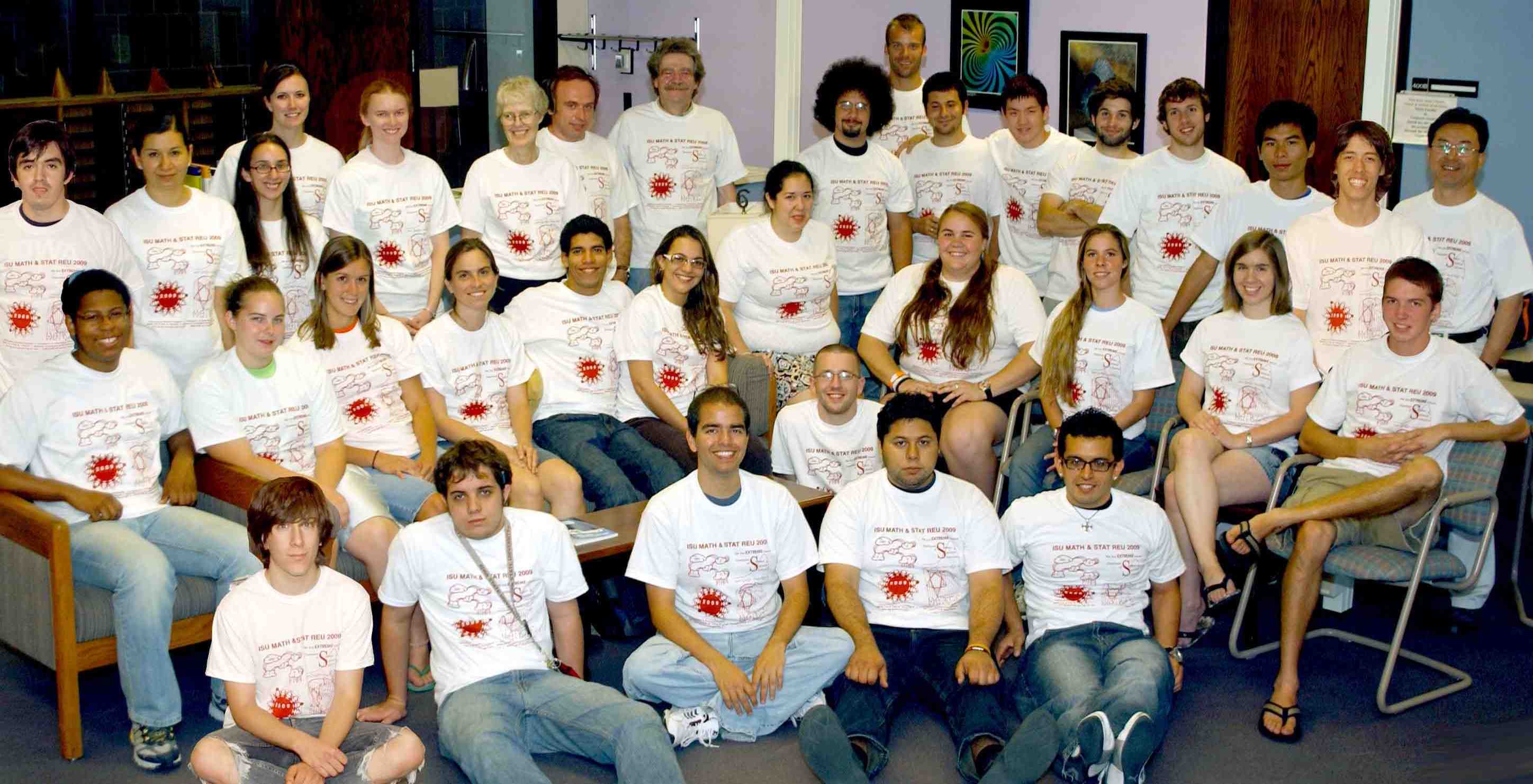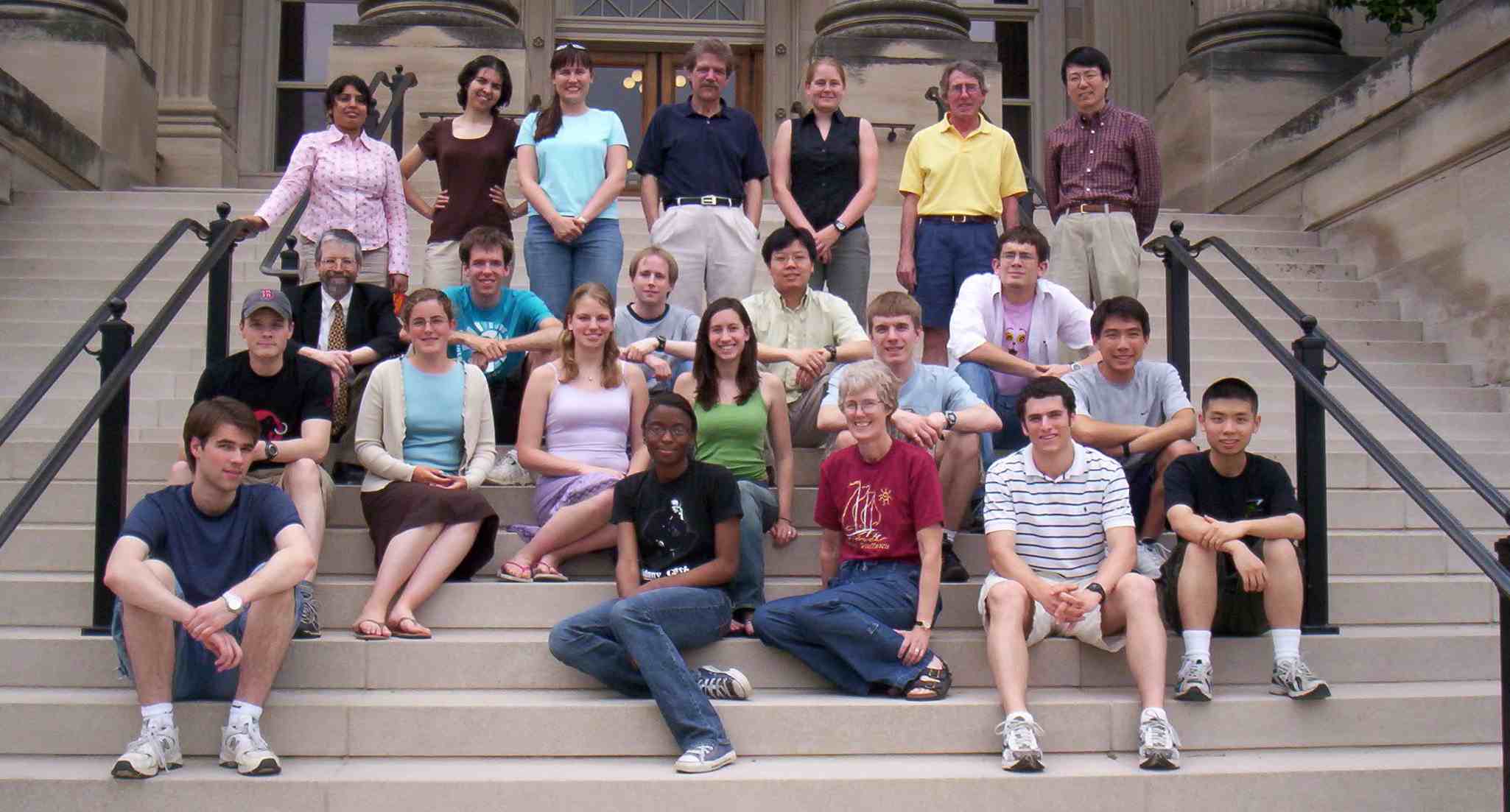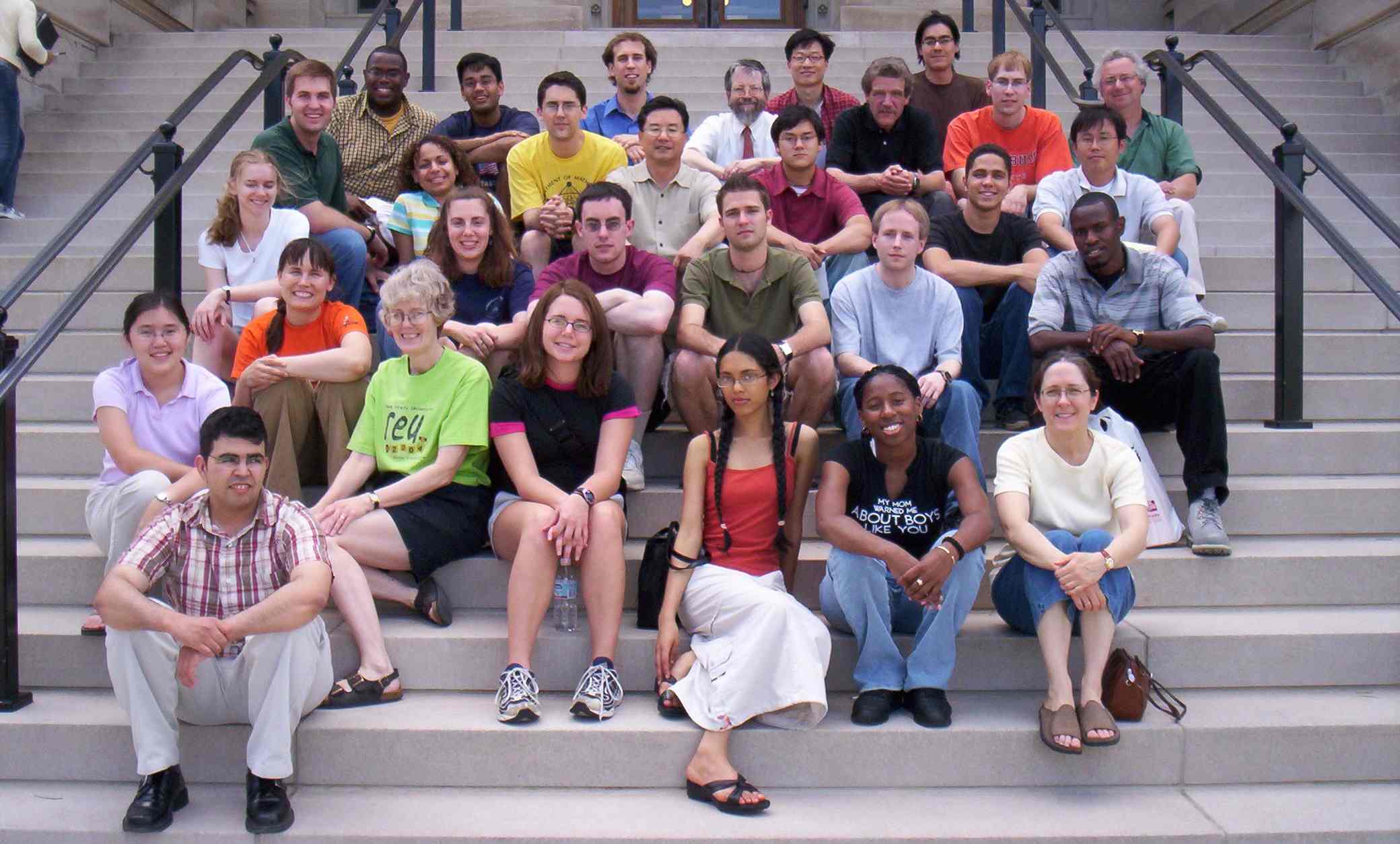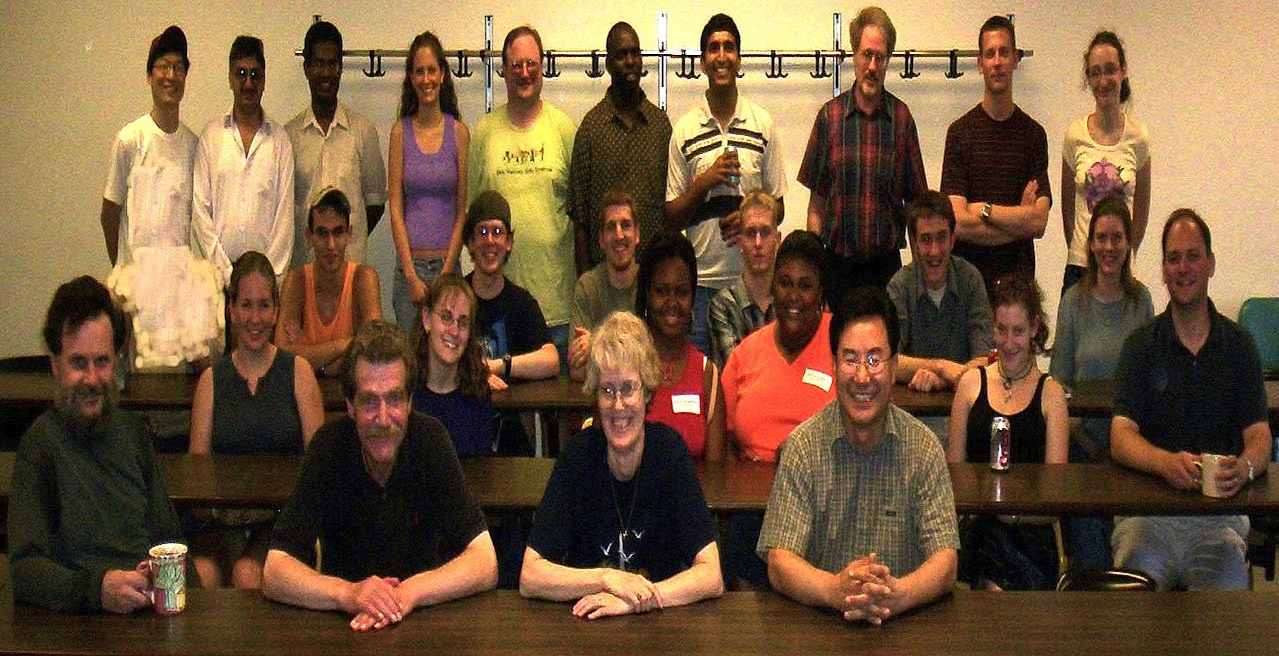2015 Projects
- Algebraic Combinatorics Group: Association Schemes, Codes, Designs, Graphs and their Links
- Combinatorial Matrix Group: Minimum Rank, Maximum Nullity, and Zero Forcing on a Graph
- Enumerative Combinatorics Group: Mathematical Aspects of Juggling Patterns
- Modeling and Computation Group: Modeling and Computation with Lattice Boltzmann Systems
Algebraic Combinatorics Group:
Project Title: Association Schemes, Codes, Designs, Graphs and their Links
Group Leader: Sung-Yell
Song (ISU)

Project Description:
We plan to study the characteristics of some of these combinatorial structures and explore the ways in which the four topics have interacted with each other.
Our typical problems will be related to certain association schemes. For example, recently, we have shown that there is an infinite family of linear codes and orthogonal arrays give rise to three-class association schemes and the relation graphs of these association schemes give rise to partial geometric designs. This work will then provide a list of the directed strongly regular graphs that can be constructed from these designs.
Some problems to be considered include:
- Which graphs give rise to partial geometric designs?
- Which orthogonal arrays are schematic (meaning give rise to association schemes)?
- Which symmetric association schemes can be obtained from linear orthogonal arrays?
- Which schematic orthogonal arrays give rise to partial geometric designs?
- Which symmetric association schemes give rise to partial geometric designs?
Prerequisites:
Some background knowledge from undergraduate algebra and linear algebra will be used, so abstract and linear algebra are prerequisites.
(Back to top)Combinatorial Matrix Group:
Project Title: Minimum Rank, Maximum Nullity, and Zero Forcing on a Graph
Group Leaders: Leslie
Hogben (ISU)
 and
Minerva
Catral (Xavier Univ.)
and
Minerva
Catral (Xavier Univ.)

Project Description:
The graph of a real symmetric matrix \(A=[a_{ij}]\) has an edge between \(i\) and \(j\) if and only if \(a_{ij}\) is nonzero. Finding the maximum multiplicity of eigenvalue 0 among symmetric matrices having a given graph is the same as finding the maximum nullity and is equivalent to finding the minimum rank among symmetric matrices having the given graph. Initially a subset \(B\) of the vertices of a graph \(G\) are colored blue and the remaining vertices are colored white. The color change rule is that if a blue vertex \(v\) has exactly one white neighbor \(w\), then change the color of \(w\) to blue. The set \(B\) is a zero forcing set if after applying the color change rule until no more changes are possible, all the vertices of \(G\) are blue. The zero forcing number is the minimum size of a zero forcing set. The zero forcing number is an upper bound for the maximum nullity of a graph, and arose independently in the study of control of quantum systems in physics, where it is called graph infection or propagation. This project will investigate problems related to minimum rank, maximum nullity, and zero forcing number.
Students involved in this project will be part the ISU Combinatorial Matrix Theory Research Group; more information is available on that page. This group regularly publishes its results (see list of papers).
Prerequisites:
Linear algebra is a prerequisite for this project, graph theory is an advantage, and a strong theoretical mathematics background (usually including abstract algebra or real analysis) is expected. The software we use is Sage and Mathematica, so knowing one or both of these in advance is helpful, but you can learn one or both of here.
(Back to top)Enumerative Combinatorics Group:
Project Title: Mathematical Aspects of Juggling Patterns
Group Leader: Steve Butler (ISU)

Project Description:
Juggling involves the art of controlling patterns, and these patterns can be understood mathematically. There have been several different approaches to mathematically exploring juggling patterns. The three primary approaches have been the following:
- rook placements on boards and siteswaps;
- transitions between states in state graphs;
- insertions of balls into the current landing schedules and cards.
Each of these have their own distinct combinatorial flavor and give rise to interesting questions. This project will consider various aspects of the mathematics of juggling patterns with a focus on enumerating juggling patterns with given constraints. Possible questions that will be considered include generalizations of Euler numbers, juggling on a sphere, and generating and enumerating juggling patterns with each permutation of the ball orders.
Prerequisites:
Linear algebra and discrete mathematics (consisting of combinatorics and/or graph theory) are prerequisites of this project. Strong mathematical curiosity is expected of the participants. The group will make use of the software SAGE for exploration, knowledge of this software prior to the REU will be helpful but can also be picked up during the REU. Finally, hand-eye coordination is not a prerequisite for this project (however, participants in the group will be encouraged to learn to juggle three balls by the end of the REU).
(Back to top)Modeling and Computation Group:
Project Title: Modeling and Computation with Lattice Boltzmann Systems
Group Leader: James Rossmanith (ISU)

Project Description:
The Boltzmann equations from statistical physics represent a fluid (liquid, gas, or plasma) by a probability density function (PDF): \begin{equation} f: \left( t \in \mathbb{R}, \, {\bf x} \in \mathbb{R}^d, \, {\bf v} \in \mathbb{R}^d \right) \rightarrow \mathbb{R}, \end{equation} which describes the probability of finding fluid particles at time \(t\), in position \({\bf x}\), and with velocity \({\bf v}\). This PDF satisfies a transport equation with a collision operator in phase space of the following form \[ f_{,t} + {\bf v} \cdot \nabla_{{\bf x}} f + {\bf F}(f) \cdot \nabla_{{\bf v}} f = C(f), \] In real liquids, gases, and plasmas, the collision operator is a complicated nonlinear and non-local operator.
In lattice Boltzmann models we are not concerned with accurate discretizations of the full kinetic Boltzmann equation, but rather we are interested in the fluid limit of this system (i.e., the Navier-Stokes equations). Therefore, instead of concerning ourselves with true collision operators, the standard practice in lattice Boltzmann models is to replace the collision operator with the so-called BGK approximation: \[ C(f) = \frac{1}{\varepsilon} \left( f_M - f \right), \] where the limiting distribution function (i.e., the Maxwellian distribution) is: \[ f_{M}(t,{\bf x},{\bf v}) = \frac{\rho}{\left( 2\pi \, T \right)^{d/2}} \, \exp\left( -\frac{\| {\bf v} - {\bf u} \|^2}{2 \, T} \right), \] where \(\rho(t,{\bf x})\) is the fluid density, \(T(t,{\bf x})\) is the thermal temperature, and \({\bf u}(t,{\bf x})\) is the macroscopic fluid velocity
This REU project will begin with an exploration of existing lattice Boltzmann approaches. The students will be encouraged to study these methods using standard tools from numerical analysis, as well as to implement some of these approaches on the computer to gain intuition about how these schemes behave. A huge advantage of the lattice Boltzmann formalism is that the methods can be understood and implemented without formal training in the physics of fluid dynamics and gas kinetic theory. Once a basic understanding is established, the students will be encouraged to consider generalizations of the lattice Boltzmann approaches to multidimensional problems in fluid dynamics and plasma physics. One particular avenue of research that will be pursued is the implementation of lattice Boltzmann schemes on modern GPU architectures.
Prerequisites:
Prerequisites for this project include basic programming skills, some background in numerical analysis (introductory undergraduate level), and some familiarity with partial differential equations (introductory undergraduate level).
(Back to top)